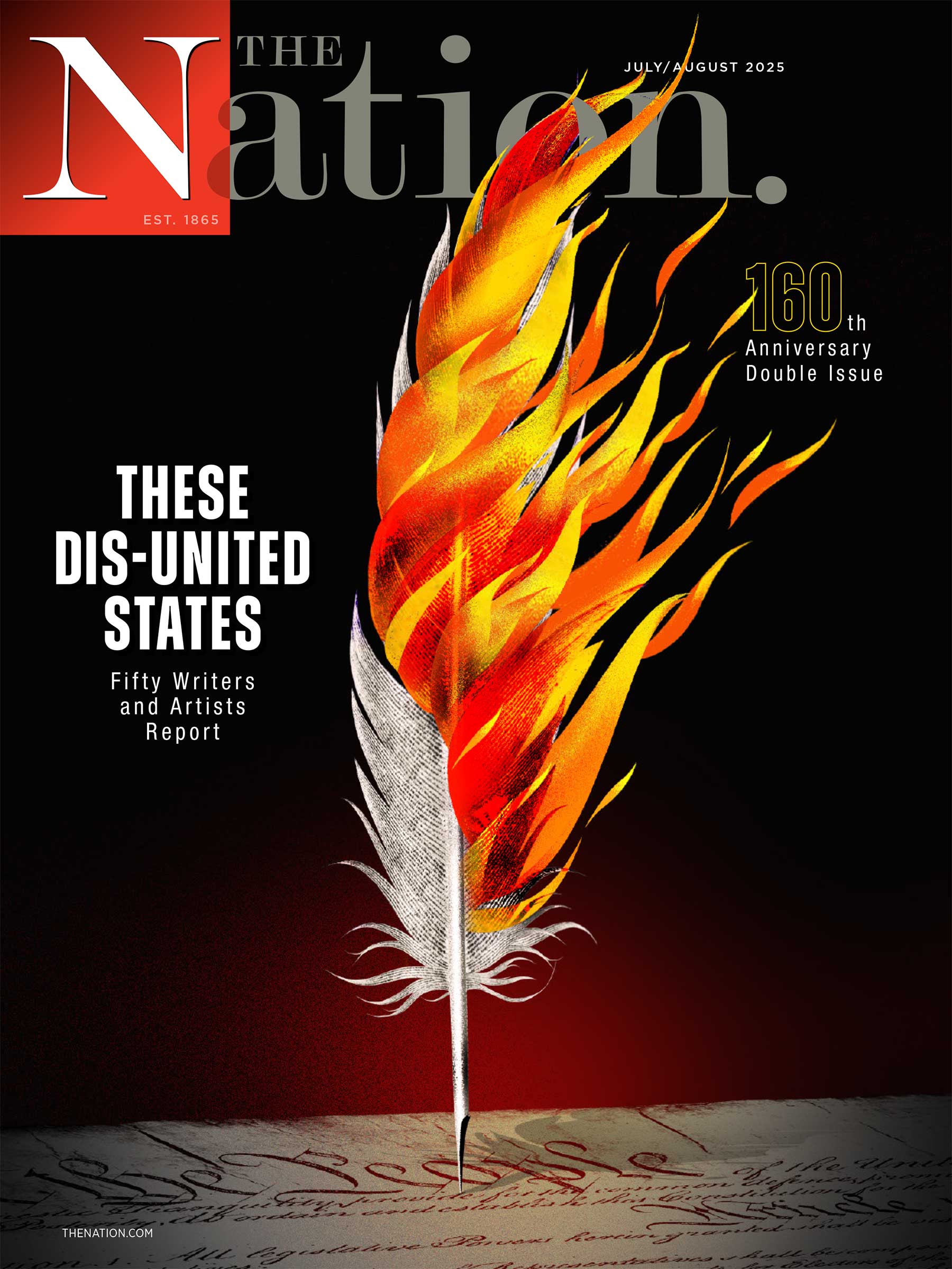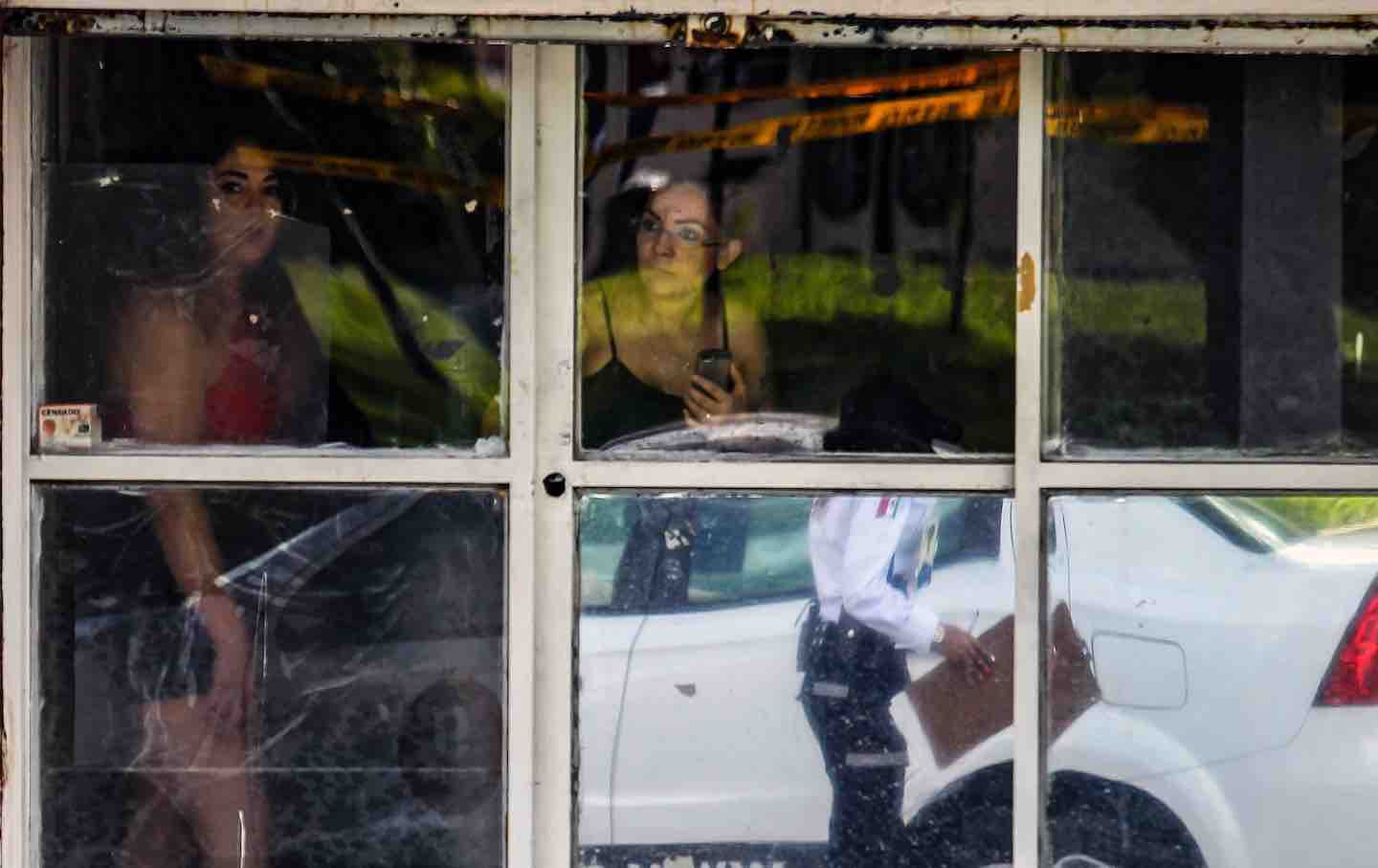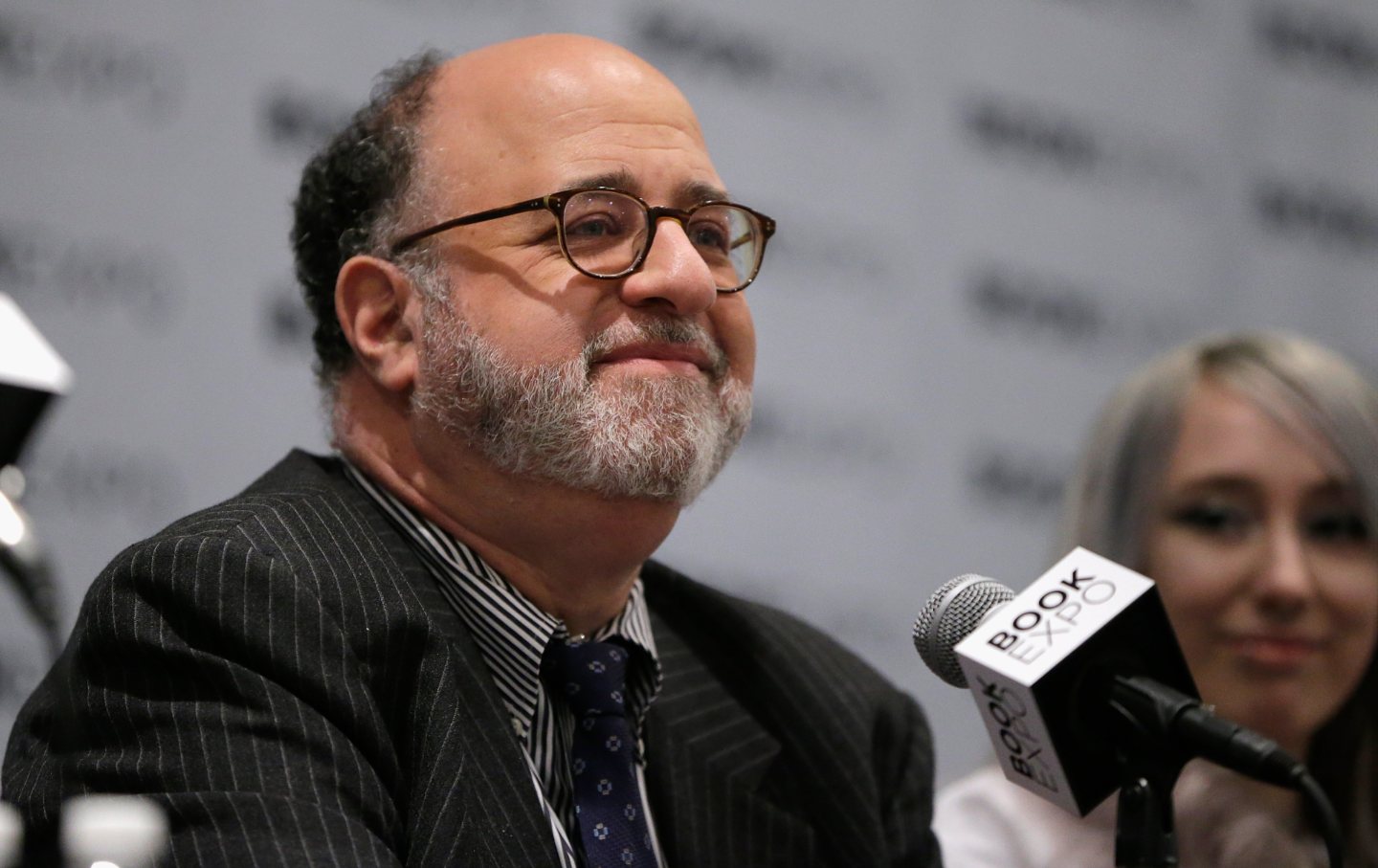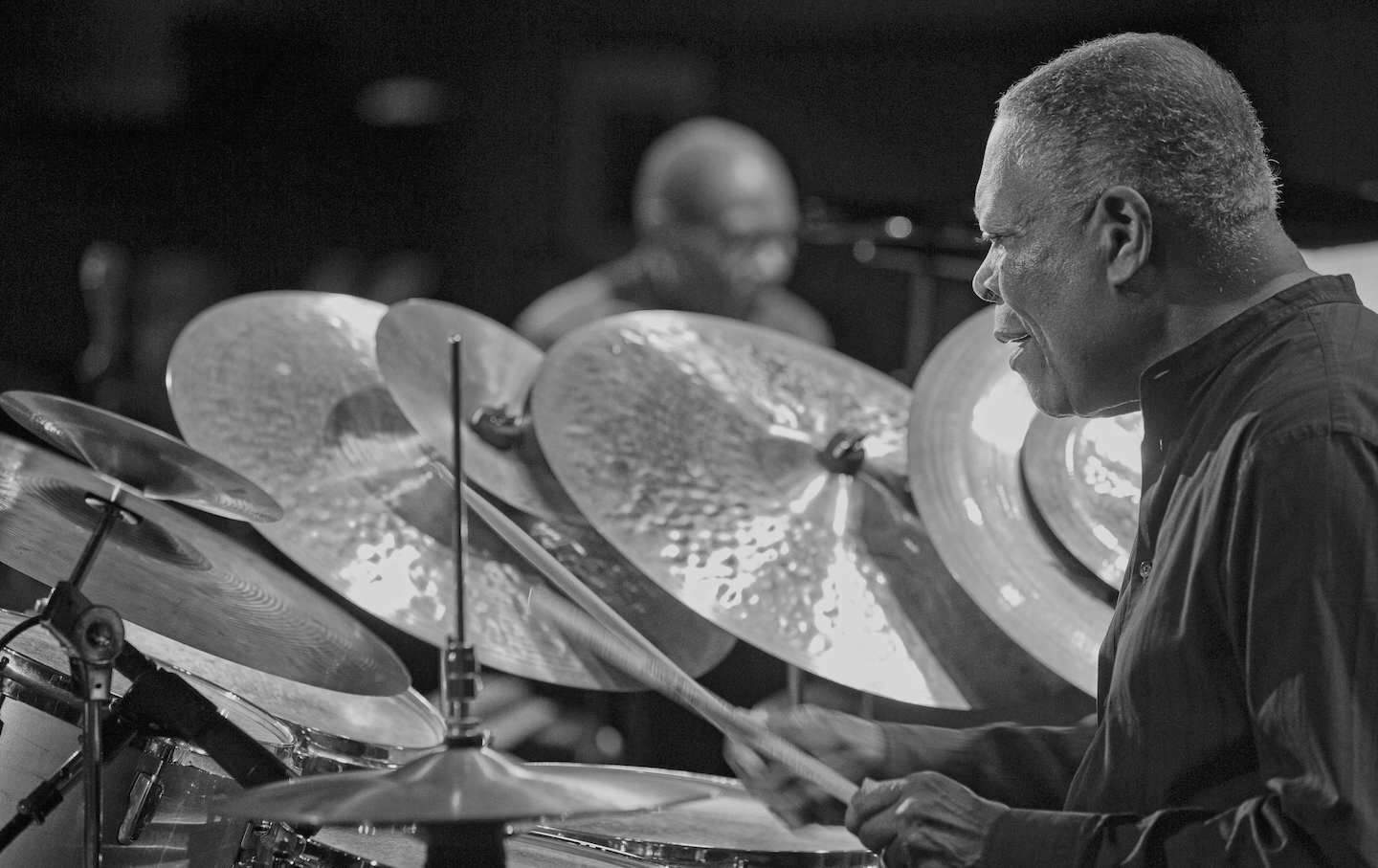/
July 21, 2025
In Pan, his debut novel, he makes the unruly mind of a teenager the stuff of high art.
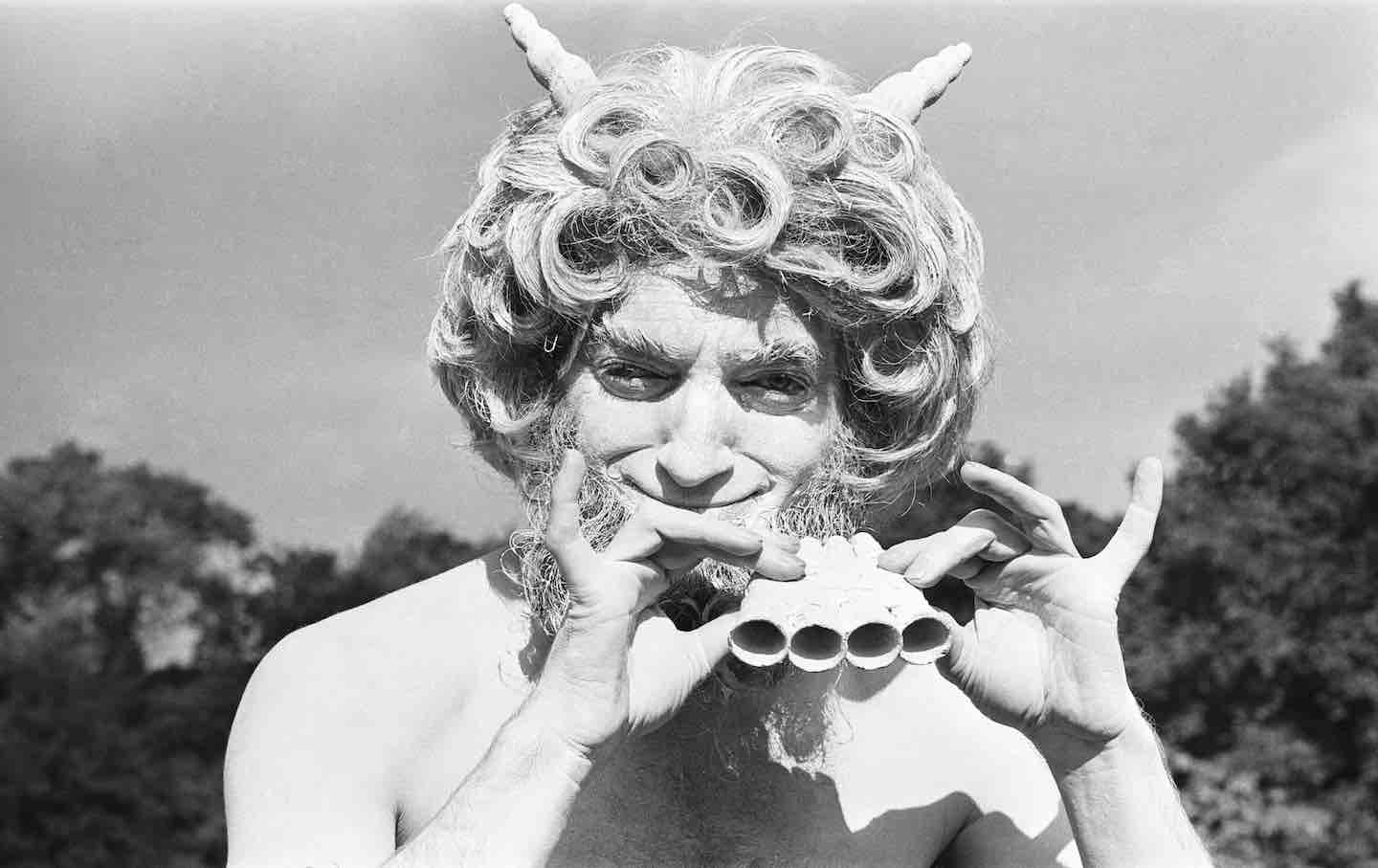
The comedian Marty Feldman as Pan in Every Home Should Have One, 1969.
(Ron Burton / Mirrorpix / Getty Images)
Acommon knock against contemporary novels is that they’re written with Hollywood in mind, briskly paced books built for easy adaptation to screen. What’s disappearing, it’s been argued, is the very quality that makes fiction unique among narrative mediums: direct access to the insides of characters’ brains. This may explain the enduring popularity of Jonathan Franzen’s densely interior social realism. But for all the psychological depth of his novels, Franzen is a fundamentally conventional stylist.
The early-20th-century high modernists—Joyce, Proust, Woolf, Faulkner—didn’t just foreground interiority; they also pioneered techniques designed to represent what consciousness feels like. Michael Clune channels this tradition (among others) in Pan, his debut novel about a teenage boy who becomes convinced that the Greek god Pan holds squatter’s rights inside his brain. A metaphysical horror story cloaked in the guise of a Künstlerroman, Pan is ultimately about the nature of subjectivity and the loneliness of living in the fortress of one’s own, unruly mind.
Clune, a professor at Case Western Reserve University, has published five previous books—two memoirs and three works of scholarship. The writer Ben Lerner has cited Writing Against Time, Clune’s academic study of literature that attempts to “arrest the flow of neurobiological time,” as a major influence on his work.
Of those books, the most well-known is White Out: The Secret Life of Heroin, which documents Clune’s descent into addiction in Baltimore while he was a graduate student at Johns Hopkins in the early 2000s. Released in 2013 by Hazelden Publishing, a small press imprint of a recovery nonprofit, White Out was an unexpected success, drawing praise from The New Yorker and elsewhere. A 2024 reissue by McNally Editions includes a new foreword by the author—and a blurb from yours truly, in which I compare Clune to James Joyce.
Proust, in retrospect, would have been more apt. For Clune, addiction is a “memory disease”; like Proust’s madeleine, the mere sight of a vial of heroin transports him back to his euphoric first taste of the drug. Clune has no use for the bromides and redemption arcs that afflict bestselling recovery memoirs or the soft sociology found in general nonfiction. His concerns are primarily phenomenological. White Out’s subject isn’t heroin but Clune’s subjective experience of being addicted to it.
Clune is drawn to sense-warping experiences that upend the frameworks through which we view the world. Pan begins with one such occurrence: its 15-year-old narrator’s first panic attack. It’s January 1990, and Nick lives with his divorced dad in a sad bachelor apartment in the outlying Chicago suburb of Libertyville, Illinois. Sitting in math class, he comes to the terrifying realization that his hand is “a … thing.” Then he forgets how to breathe: “I was sucking in too much air or I wasn’t breathing enough out. The rhythm was all wrong.”
Current Issue
That episode passes, but after two repeat instances, Nick’s dad takes him to the ER. There, a doctor tells Nick that these aren’t heart attacks but panic attacks. He should breathe into a paper bag if it happens again. Nick returns to school armed with three brown bags, though they’ve gone soggy with sweat from being clutched in his clammy palms. He attempts to dry them in the bathroom with a hand dryer, prompting yet another attack. Lo and behold, the breathing trick works.
Buoyed by the success of this simple cure, Nick goes to class, claims diarrhea as the cause of his earlier absence, and passes a note to Sarah, his auburn-haired crush. The note states, simply: “SPRING HAS STARTED.” Surprisingly, this earns him Sarah’s number, and an invitation to her house. She takes Nick down to her older brother’s basement bedroom, where they listen to records and bond over their shared belief that Boston’s “More Than a Feeling” is a profoundly transcendent work of art. Sarah closes her eyes and recites part of a poem she’s written. In a reciprocal show of vulnerability, Nick tells her about his panic attacks, then proceeds to have one. He breathes into a bag, diffusing both the attack and the sexual tension. The next day, Nick and Sarah head to the library to research his condition. They discover that the word panic comes from the Greek god Pan.
The next time Nick sees Sarah, it’s in a barn owned by the family of a rich kid named Tod. In true rich-kid form, Tod has access to drugs via a charismatic and possibly sociopathic older brother, Ian. Worried that marijuana might induce an attack, Nick fakes inhaling when a bong comes his way. Tod asks why Nick is pretending to smoke, suggesting that it’s because he doesn’t have a “solid mind,” which Ian then describes as thoughts that “flow in grooves, built deep into your brain.” They’re stoned and fucking with him, but they’re also correct; during panic attacks, Nick feels like his head is a diving board from which his thoughts might leap. He imagines them dripping down the lunchroom walls.
Popular
“swipe left below to view more authors”Swipe →
Despite the hazing, Nick and his friend Ty return to the barn, where Ian leads the group in a “Belt Day” celebration—a pseudo-pagan bacchanal involving LSD (Nick abstains), body painting, and live mice. Nick and Sarah have sex, which he describes as a “savage smile” opening inside them and tearing through them both as if they’re “one single balloon.” When the school year ends, Nick gets a job at a hardware store where the Neville Brothers’ “Everybody Plays the Fool” plays 14 times per shift, driving him further into madness. He begins to fear sleep and vows to avoid it. A few days later, a bleary-eyed Nick delivers an impassioned monologue to the denizens of the barn, proposing that “those who fall into the abyss of consciousness every night” live lives “perforated by death.”
Nick’s father sends him to a psychologist, who diagnoses him with generalized anxiety disorder. Ian—who’s been suspended from college for supposedly terrorizing his girlfriend, and has taken so many drugs that “the dude is drugs”—has another theory: Pan is using Nick’s brain as a host. For Ian, this isn’t something to reject but to embrace. “Panic is absolute clarity,” he tells Nick, a Greek god in your ear shouting, “Wake up! These thoughts are sacred—this presence in you—sacred…”
In Writing Against Time, Clune makes a distinction between classical and Romantic views of posterity. Whereas the classical poets aimed to preserve their names and deeds through art that would last across centuries, the Romantics had loftier aspirations: to trap discrete instants of raw sensation in their verse. By his own admission, Clune is not a historicist scholar; he draws connections between seemingly disparate traditions largely based on vibes. Clune bundles the writers he admires—Proust, Nabokov, John Ashbery—beneath the broad umbrella of the Romantics despite the fact that their work postdates the poems of Wordsworth, Coleridge, Keats, et al. by a century or more. He roots the group’s guiding objective in another unlikely confrere, the early Christian theologian St. Augustine: “Who can lay hold of the heart and give it fixity, so that for some little moment it may be stable, and for a fraction of time may grasp the splendor of a constant eternity?”
Clune suggests that while repetition dulls perception, a person’s first exposure to any new set of stimuli heightens reality, slowing time to a sticky drip. It would stand to reason that hormone-jacked teenagers—and especially those prone to panic attacks—see and feel more intensely than sense-dulled adults. “When you’re fifteen, your body and mind are still tied to nature,” Nick reflects. “The seasons start inside you. God fashions the new season out of interior materials. You discover the season, now you’re performing it. You’re winter, you’re spring. And the things around start to mimic you.”
Clune clearly locates himself within this big-tent Romantic tradition, and if his prose sometimes shades purple, then that’s the trade-off for passages that glimpse at Augustine’s splendor, such as this description of reaching for Sarah’s hand when Nick first sees her at the barn:
Her hand swung back as mine swung forward and our fingers brushed. In that slow half-second, I felt every cell of the warm quarter inch of her finger against mine. Time stretched—the cells beat, and breathed, and moved—I wondered how feeling comes and goes in the body—how feeling breathes and moves in a shape of the body, like dust in a sunbeam—then her hand swung forward again and she ducked through the low door and we were there.
The bigger challenge with this kind of novel—and one that Clune the critic would surely anticipate—is that sustained immersion in the headspace of a self-absorbed teen can be exhausting. For the most part, humor keeps the tedium at bay. The image of Nick drying his “medical” paper bags in the boys’ bathroom is very funny, as is his fumbling his first date with Sarah. There’s dramatic irony at work here; the reader sees the absurdity of these situations, even if they’re deadly serious to Nick. But Pan is claustrophobic by design, a novel that seeks to simulate a prolonged panic spiral. At one point, Nick describes panic as “an excess of consciousness,” and that surplus is felt on the page. There’s only so much raw sensation one can take.
Things start to sour for Nick. First, Sarah and Ian conspire to see if she can somehow transfer Pan from Nick’s head to hers by opening her eyes really widely during sex. It doesn’t work. When the lights flick on to reveal that Ian’s been watching, Nick feels betrayed and leaves in a huff. He later returns to the barn to find Tod and Ian smashing mice with a shovel. Blood spatters against Ian’s glasses, and Nick decides he’s done with these guys. Another epiphany: Pan didn’t cause his panic attacks, his parents’ divorce did! Nick reads Baudelaire’s Flowers of Evil and learns to neutralize his anxious thoughts by writing them down, creating a “level of the world invulnerable to panic.” Though Nick feared the prospect of his thoughts’ leaping wildly from his diving-board brain, he discovers that a purge can be cathartic if it’s properly controlled. His sleep improves.
Clune might have ended his novel here, with our hero learning to churn his neuroses into poetry: A Portrait of the Artist as Young Insomniac. Instead, things take a darker turn. The book’s final pages seem to suggest that art is an insufficient refuge from the storms inside our brains. This may be so, but as a tool for tracking those storms it’s unparalleled. Discussing Proust in Writing Against Time, Clune proposes: “The fountain of youth gushes in other people’s skulls; art opens those skulls to us.” In Pan, Clune offers unrestricted entry to the interior landscape of a disturbed American teen. If at times I wanted to claw my way out of Nick’s psyche, that’s a testament to how deeply Clune mines it. Pan pries Nick’s skull open. Beware of what’s inside.
Adam Wilson is the author of four books, including the forthcoming novel Fail Sons. His is essays, journalism and criticism have appeared in Harper’s Magazine, The New Yorker, Bookforum, and elsewhere.
More from The Nation
In Death Takes Me, an intellectual murder mystery, the Mexican author looks at the overlap between acts of interpretation and acts of violence.
From the Cold War till Donald Trump, there’s always been a special dispensation for hawkish bigots.
Our art critic visits the Smithsonian American Art Museum to get a closer look at the Trump administration’s attack on DC arts institutions.
/
The legendary jazz drummer played with Herbie Hancock, Miles Davis, and Stan Getz. His new memoir tells all—and lays out his own philosophy.
